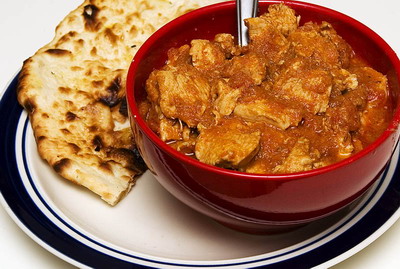Indian food is famous for its sumptuous varieties and richness and is extensively regarded as one of the tastiest cuisines in the world. The essence and whiff of Indian food is conspicuous by its presence and you can find an Indian restaurant in just about any part of the planet.

Indian cuisines are divided into four based on the four geographic regions and each of them have distinct characteristics. The four Indian cuisines are South, North, West and East Indian cuisines. In this article we will take a brief gander on each of these cuisines.
Lets begin with north Indian cuisines. North India is known to have extreme climates and has abundant supply of vegetables and fruits. The food and culture in North India has been partially influenced by Central Asia. North Indians use a lot of cream and Yogurt with a generous sprinkling of nuts and dry fruits. North Indian dishes have some exemplary vegetarian dishes that makes full use of the abundant vegetables found in this region . Rice is not consumed in this region as much as it is in other parts of India. Bread, Rothis and Kulchas are the staple diet in North India. Coriander, red chillies, garam masala and turmeric are the widely used spices here. Tandoori chicken. Punjabi chole, Dal Makhani and Lassi Patial are the popular North Indian dishes and you will find these preparations in almost any party or special occasion.
Southern India has a hot and humid climate and with a lot of the states in this region being coastal there is ample rainfall during monsoons. This coupled with a fertile soil helps in producing abundant fruits and vegetables. Rice is the staple food in this region with bread and rothis being supplementary. The most common dishes in South India are Sambhar and Rasam which are essentially soups that are mixed with rice to give it flavor. Indian food can be hot and pungent and South Indian food is more so, with the spiciest food being from the state of Andhra Pradesh. Commonly used spices in South Indian Curry leaves, chillies, tamarind and mustard. Some examples of the common south Indian snacks are dosa, vada, idli and payasam. Dosa is the Indian version of a thin pancake and is made from rice and black lentils. It is rich in carbohydrates and proteins and is generally consumed for breakfast. Idli is the thicker adaptation of Indian pancake made from a batter of rice and fermented black lentils. Both idli and dosa are served with soups like sambhar and chutney.
The Mongolians and Chinese have had some influence in the food styles and recipes of East Indian Food. The desert East Indian recipes are a real treat and the variety of sweet dishes in this region is huge. For the most part the food is fried and steamed and the staple food of this region is rice. Milk and yogurt are used in abundance while the spices used are similar to that used in South India. Fish is consumed a lot in East India and therer are lots sea food recipes in regions such as Kolkata. Sandesh, Momos and Thukpa are popular vegetarian dishes in this region.
The Western part of India has dry as well as hot weather and the vegetable supply is limited compared to other regions; but that doesn’t seem to affect the lavishness and surplus of its cuisines. Gujurat is known for its sweet dishes and Rajasthan is famous for its spicy dishes. Staple food in this region depends on the cuisines and there is no preference to either rice or rothis.
For additional information on Indian food and in particular the south Indian recipes please visit South Indian Recipes. The web page contains South Indian Food recipes and videos.
No comments:
Post a Comment